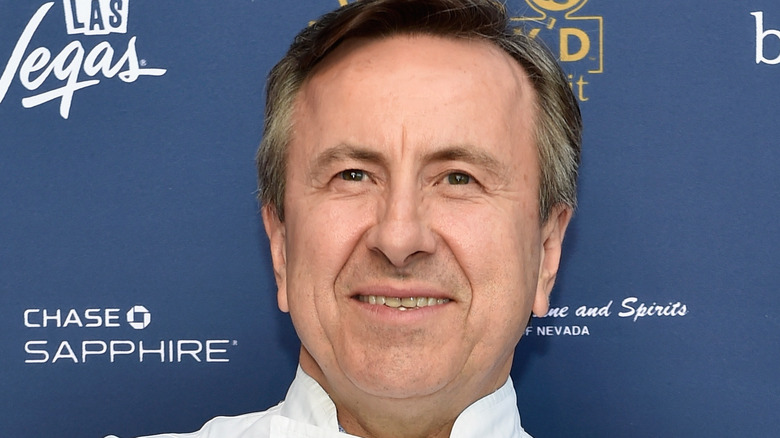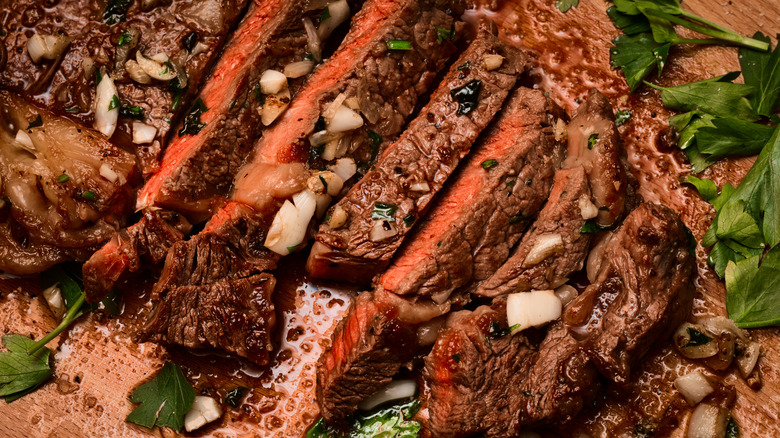The Flavorful Butter Technique Daniel Boulud Swears By When Cooking Steak
When a Michelin-starred chef has cooking advice, you follow it, especially if it's doable in your own home kitchen. For instance, there are many different kernels of wisdom. According to chef Emma Bengtsson of two-star restaurant Aquavit via Food Network, try brining fish for extra crispy skin. It does require a bit of planning and refrigerator space, but it's well worth the effort. A day before you plan to eat, make a dry brine of equal parts sugar and salt and coat your piece of fish, preferably salmon. Leave it in the refrigerator for about two hours, then rinse the fish and return it to the refrigerator overnight, skin side up.When you're ready to cook, get your pan good and hot and only sear the skin side – don't fuss with it.
While seafood tips are always welcome, another culinary tip from the maestros involves bread. Don't throw away your stale bread – it's a staple ingredient in several Tuscan soups, namely pappa al pomodoro and pancotto. The chef/owner of one-star restaurant Masseria, Nicholas Stefanelli, keeps stale bread and combines it with vegetable scraps from celery, onions, and tomatoes to create a cost-effective soup, according to Departures. But forget both fish and bread for a second.
French-born chef Daniel Boulud, whose eponymous Manhattan restaurant Daniel has two Michelin stars, has a piece of advice for home cooks – elevate your steak with a butter baste.
Butter carries flavor that enhances an already rich steak
There are so many juicy and tender steak techniques, from the reverse sear to dry aging to sous vide, but if you're looking for added richness, Daniel Boulud recommends cooking steak with butter. According to Boulud via Reader's Digest, butter "nourishes" the beef, making it delectable.
When we butter baste a steak, we do it for a couple of reasons, namely to improve the cook and crust of the steak. Basting will cook both sides of the steak – while the underside is getting hit with the direct heat from your cast iron pan, the top side is getting a hot butter bath, which will speed cooking along. And the browned butter has nutty elements from the caramelized dairy proteins that improve the curst of your steak. It's a win-win. Butter basting also has the added bonus of coating the meat in a layer of fat, which carries the flavor of your chosen aromatics, such as sprigs of thyme, rosemary, or cloves of garlic, maybe even a shallot.
Just a word of caution, though – butter burns easily, so make sure you're adding it closer to the end of cooking and that you lower the heat to medium. The USDA recommends you cook your steaks to a minimum of 145 degrees Fahrenheit before resting, but if your aim is medium-rare to medium, aim for pulling your steaks when they hit between 130 and 140 degrees Fahrenheit, as the temperature will rise by a few degrees while resting.

